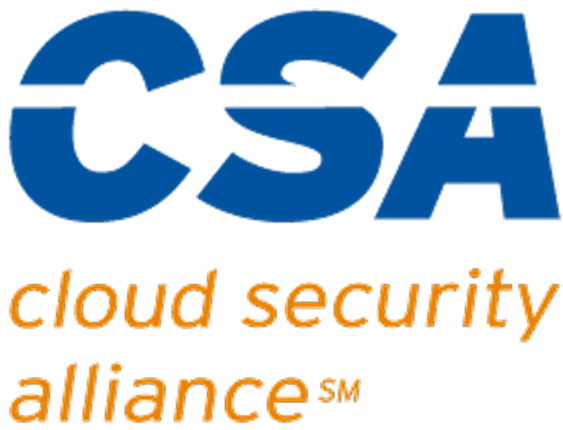Introduction
Sharing large files has become commonplace for businesses and individuals alike. However, sending large files via email can be difficult or impossible due to size limitations imposed by email providers.
With the advent of cloud storage and file transfer services, it’s easier than ever to share large files with others. In this article, we will explore several different ways to share files that are too big to send via email, including cloud storage services, file compression tools, file transfer services, FTP, online backup services, and physical file transfer. Each of these methods has its advantages and disadvantages, so which is best depends on your specific needs.
Use a cloud storage service
Cloud storage services such as Google Drive, Dropbox, and OneDrive allow you to upload large files and share them with others via a link. This method is handy for sharing large files with multiple people, as you can send them all a link to the file rather than having to send multiple copies of the file via email. Cloud storage services typically offer a large amount of storage space, making it feasible to store and share large files.
Drive is a cloud-based storage service provided by Google. It allows users to store files, photos, and videos on the cloud, share them with others, and collaborate on documents in real time. You can upload any type of file and share it with others via a link. You can also collaborate with others on documents (Google Docs, Google Sheets) and presentations (Google Slides) with others. The free version of Drive includes 15G of storage; more storage can be purchased for a monthly fee. If you have a Gmail or Google Workspace account, you can start using Drive and other Google apps immediately.
Dropbox is another popular cloud storage service that allows you to store and share files on the cloud. You can upload files to Dropbox and share them with others by creating a link. You can also collaborate on files with others and keep track of the changes made to the files. Dropbox offers a free account with 2GB of storage and several paid options.
OneDrive, Microsoft’s cloud storage service, allows you to upload, store and share files, photos, and documents from anywhere, on any device. It also enables you to collaborate with others and share files with a simple link. Like most other cloud storage services, OneDrive offers a free plan and paid options – the free plan currently includes 5GB of storage.
Use a file compression tool
File compression tools such as WinZip or 7-Zip can be used to make a reduced-size copy of a file (or group of files) that is easier to send via email. File compression works by reducing the amount of redundant data in a file, which in turn reduces its size. This can be particularly useful for large files, such as databases, videos, or high-resolution images, that may be too large to attach to an email.
WinZip is a widely used commercial file compression tool that compresses and decompresses files. It supports various file formats, including ZIP, RAR, and TAR. It also allows you to encrypt your files for added security and password protect them.
7-Zip is a free, open-source file archiving and compression software. It supports several file formats, such as ZIP, RAR, and TAR. 7-Zip also includes a robust compression algorithm called LZMA, which provides a high compression ratio. It also allows you to encrypt your files and password-protect them.
If you prefer not to use a third-party utility, Recent versions of Windows and macOS include a native compression/decompression tool.
Once you have compressed the file, you can attach the compressed copy to your email and send it. The recipient will need to decompress the file before they can use it.
Use a file transfer service
File transfer services like WeTransfer, Hightail, and SendSpace allow you to share large files without attaching them directly to an email, providing an easy alternative for file sharing. They allow you to upload a file to their servers, then generate a link you can send to the recipient. The recipient can then use the link to download the file.
WeTransfer is a file transfer service that allows you to send files up to 2GB in size for free. It also offers paid plans with more storage and enhanced features.
Hightail, formerly known as YouSendIt, is another file transfer service that allows you to send large files. Hightail’s free plan currently offers 2GB of storage and allows files up to 100MB to be uploaded and shared. Paid plans include more storage, larger share sizes, enhanced security, and collaboration tools.
SendSpace is a free file transfer service that allows you to upload and send large files up to 300MB – no account creation or login is required. It also offers paid plans with more storage and more features.
All of these services offer a simple way to share large files with others without the need to attach them to an email. They are also user-friendly, making them a good option for people who are not very tech-savvy.
Use an FTP/SFTP server
FTP (File Transfer Protocol) is a standard network protocol used to transfer files from one host to another over a TCP-based network, such as the internet. FTP can be used to upload and download files from a remote server and is suitable for large files that might exceed email size limits. SFTP (Secure File Transfer Protocol) is a secure version of FTP that uses SSH (Secure Shell) to encrypt all data transferred between the client and server. This provides a safe and encrypted connection for transferring files, making it more secure than regular FTP. SFTP also offers additional security features such as authentication and access control. Most modern FTP client and server programs support SFTP.
Client programs such as FileZilla, WinSCP, and Cyberduck allow users to connect to an FTP/SFTP server and transfer files. Once connected, users can upload and download files by simply dragging and dropping them to or from the appropriate folder on the server.
FTP/SFTP servers such as FileZilla Server, ProFTPd, and vsftpd are software programs that accept client software users’ connections so they can transfer files. While the machines running these programs are called “servers,” they can be anything capable of running the FTP server software, even a desktop PC.
FTP servers are most commonly used by businesses and organizations that need to share large files with a group of people, such as software developers, graphic designers, and video editors. They can also be used for personal projects, such as sharing large files with friends or family members.
FTP allows for fast and efficient file transfer. However, sharing files via FTP requires the sender or receiver to run an FTP or SFTP server, which requires some technical know-how. It is important to stress that FTP is less secure than other file-sharing methods since the files are transferred in plain text and can be intercepted by third parties. For this reason, it’s highly recommended to use a secure FTP (SFTP) or FTP over SSL (FTPS) to encrypt the file transfer.
Use an online backup service
Online backup services like Carbonite, Backblaze, and Crashplan allow you to securely store and share large files. These services provide a way to back up and store large files in the cloud and share them with others.
Carbonite is an online backup service that allows you to back up and store files in the cloud. It offers a variety of plans, including personal and business plans, and most include sharing options that may be worth exploring if you already use Carbonite’s backup services.
Backblaze is another online backup service that allows you to back up and store files in the cloud. It offers unlimited storage space, and you can share files with others by creating a link that they can use to download the file.
Crashplan is another online backup service with files stored in the cloud. It offers a variety of plans, including personal and business plans, and most include limited sharing options that may be worth exploring if you already use Crashplan’s backup services.
These are just a few of the many services that offer a secure way to back up and share large files, making them an option for people who need to share files that are too large to attach to an email. However, their primary purpose is to provide a way to keep a copy of essential files in a secure location in case of data loss or hardware failure.
Use a USB drive or an external hard drive
If all else fails, using a USB drive or an external hard drive to share documents and other large data files is very reliable. A USB drive, also known as a flash drive, is one of the easiest ways to transfer files from one computer to another. It consists of an integrated circuit embedded within a plastic housing that connects to any computer with a standard USB port. In the computer’s file explorer, it appears as another storage drive.
An external hard drive is similar in concept but offers much more storage capacity than most USB drives. Both devices are relatively inexpensive and offer quick and easy data transfers regardless of the file size.
When using this method, users copy their existing file onto the specific device (USB or external hard drive) and then physically hand it to the person they wish to share the file with. That person connects the device to their computer and copies the files to their own hard drive.
Conclusion
There are many ways to share files that are too large to send via email. Whether you choose to use cloud storage services, file compression tools, file transfer services, FTP, online backup services, or physical file transfer methods, it’s important to carefully consider the pros and cons of each before deciding which one is best for your specific needs. Each has its own set of advantages and disadvantages, and you should choose the one that best meets your needs in terms of security, speed, and ease of use.
Remember to always keep in mind the legal aspect of the file transfer, and do not share copyrighted material without the copyright holder’s permission. With the right tools and planning, sharing large files can be quick, easy, and secure.




